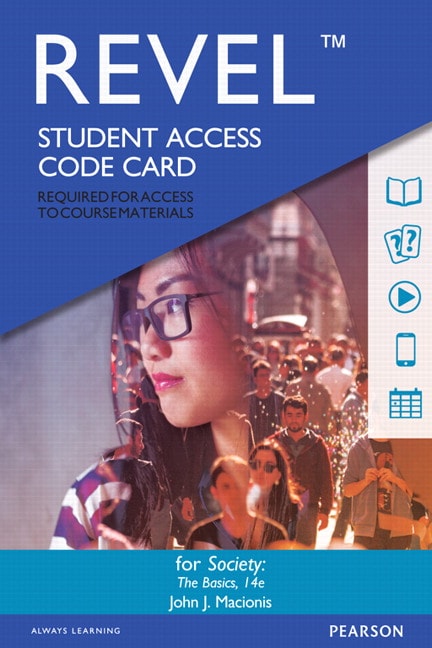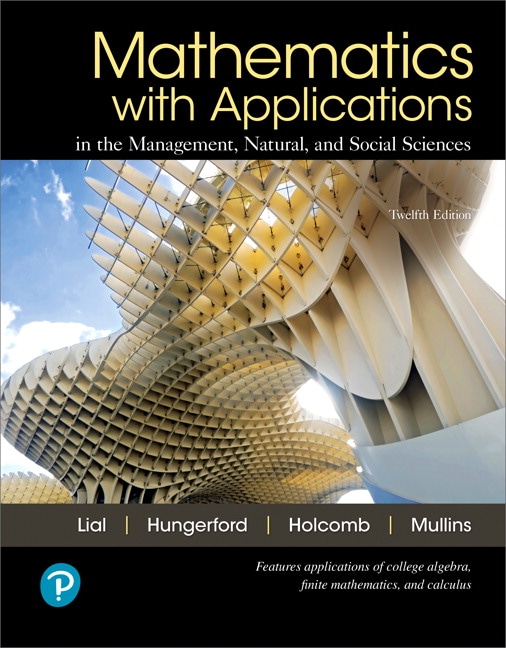Category : Higher Education
Table of Contents
Most chapters begin with “Reflection” and conclude with “Summary,” “Critical Thinking Questions,” “Useful Web Sites,” “Resources,” “Discussion Questions,” and “References.”
Preface.
1.The Need for Health Education.
The Evolution of Health Education.
What Is Health?
What Is Health Education and Promotion?
Accomplishing Health Education.
Why Health Education?
The Coordinated School Health Program.
School-Based Health Center — The School Nurse.
2.The Role of the Teacher in Health Instruction.
The Challenge of Health Education.
Barriers to Successful Health Teaching.
Professional Preparation.
Personal Qualities of the Health Teacher.
The Teacher as Part of the Health Teacher.
Legal Responsibilities of the Teacher.
Working with Students.
Working with Parents.
Working with Other Teachers and the School Administration.
Working with the School or Clinic Nurse.
Working with Outside Agencies.
The Teacher's Responsibility in Education of the Disabled.
3.Planning for Health Instruction.
Content Areas in the Elementary School.
Grade Placement for Health Education Topics.
Developing Scope and Sequence.
Determining What to Teach.
Social Mores.
Student Interest.
The National Health Education Standards.
Teaching for Values.
Curriculum Approaches.
School Health Education Study (SHES).
The National Diffusion Network (NDN).
Health Programs Approved by NDN.
Commercial Programs.
Other Teaching Materials.
Developing a Health Curriculum.
The Michigan Model — A State Model.
Teaching Units.
Lesson Planning — Selected Strategies.
The Hunter Approach to Lesson Planning.
Deciding Student Outcomes.
Writing Instructional Objectives.
4.Strategies for Implementing Health Instruction.
The Relationship of Strategies to Learning.
Factors Affecting Strategies.
Decision Making and Health Strategies.
The Power Model for Decision Making.
Learning Styles and Strategies Selection.
A Positive Climate for Learning.
Clarifying Activities.
Simple Value-Related Strategies.
Decision Stories.
Role Playing.
Other Verbal and Discussion-Oriented Strategies.
Brainstorming.
Buzz Groups.
Case Studies.
Cooperative Learning.
Critical Essays.
Debate.
Committee Work.
Lecture, Group, and Panel Discussion.
Resource Speakers.
Action-Oriented Strategies.
Dramatizations.
Storytelling.
Flannel, Felt, and Magnetic Boards.
Crossword Puzzles.
Demonstrations and Experiments.
Exhibits.
Field Trips.
Games.
Models and Specimens.
Peer Helpers.
Self-Appraisal.
The Use of Media in Health Instruction.
Computer-Assisted Instruction.
Television, Videotape, and Videodisk.
Choosing Videotapes and Videodisks.
Filmstrips.
Slides.
Overhead Transparencies.
Audio Tapes.
Selecting Appropriate Media.
5.Measurement and Evaluation of Health Education.
Measurement and Evaluation.
Teacher Skills Needed for Competent Measurement and Evaluation.
Teacher-Made Tests.
Developing Tests.
Measuring Health Attitudes.
Attitude Scales.
Observation.
Traditional Grading Strategies.
The Percentage Method.
The A to F Combination Method.
Pass/Fail.
Performance-Based Evaluation.
Peer Evaluation.
Narrative Grading.
The Kentucky Model.
6.Mental Health and Stress Reduction.
The Importance of Mental Health.
Characteristics of the Emotionally Healthy.
What Children Need to Achieve Emotional Health.
Self-Esteem and the Development of Emotional Health.
Values and Patterns of Decision Making.
Behavior and the Expression of Emotions.
Defense Mechanisms.
Children and Major Psychiatric Disorders.
Obsessive-Compulsive Disorder in Children.
Panic Disorder in Children.
Depression in Children.
Suicide in Children and Adolescents.
Latchkey Children.
Divorce and Separation.
Death and Children.
The Role of the Teacher in Promoting Mental Health.
The Role of the Family in Developing Emotional Health.
Stress and Its Relationship to Mental Health.
The General Adaptation Syndrome.
Effects of Chronic Stress.
Dealing with Distress.
Stress Management in Children.
Exercise.
Relaxation Techniques.
Other Relaxation Techniques.
The Role of Effective Communication in Reducing Stress.
7.Strategies for Teaching Mental Health and Stress Reduction.
Mental Health: An Integral Part of Life.
Cycle Plan for Teaching Concepts.
Value-Based Activities.
Decision Stories.
Other Strategies for Learning.
8.Body Systems/Personal Health.
A Unique Machine.
The Nervous System.
The Central Nervous System.
The Brain.
Autonomic Nervous System.
The Endocrine System.
The Hypothalamus.
The Thalamus.
Glands.
The Pituitary.
The Thyroid Gland.
The Adrenal Glands.
The Pancreas.
The Respiratory System.
The Circulatory System.
The Heart.
The Blood.
The Lymphatic System.
The Digestive/Excretory System.
The Kidneys.
The Skeletal/Muscular System.
The Spinal Column.
The Skull.
The Sternum and Rib Cage.
The Pelvis.
Bones of the Legs and Feet.
Bones of the Arms and Hands.
The Muscles.
Developing Good Habits Early.
Personal Appearance.
The Skin.
Skin Conditions.
Core of the Skin.
The Fingernails and Toenails.
Care of the Nails.
The Hair.
Care of the Hair.
Posture.
The Senses.
The Sense of Vision.
The Eye.
Visual Defects.
Care of the Eyes.
The Sense of Hearing.
The Ear.
Hearing Impairments.
Care of the Ears.
The Sense of Touch.
Care of the Sense of Touch.
The Senses of Taste and Smell.
Care of the Senses of Taste and Smell.
Dental Health.
Dental Problems.
Care of the Teeth.
Fitness, Relaxation, and Sleep.
Fitness.
Relaxation.
Sleep.
9.Strategies for Teaching Body Systems/Personal Health.
Valued Outcomes/Body Systems.
Valued Outcomes/Personal Health.
Planning Learning Activities.
The Concept of Personal Health.
Value-Based Activities/Body Systems.
Value-Based Activities/Personal Health.
Decision Stories/Body Systems.
Decision Stories/Personal Health.
Discussion and Report Techniques/Body Systems.
Discussion and Report Techniques/Personal Health.
Experiments and Demonstrations/Body Systems.
Experiments and Demonstrations/Personal Health.
Puzzles and Games/Body Systems.
Puzzles and Games/Personal Health.
Other Ideas/Body Systems.
Other Ideas/Personal Health.
10.Family Life Education.
Implications for Sexuality Education.
Where Do Children Learn about Sexuality.
School Based Sexuality Education.
Guidelines for Comprehensive Sexuality Education.
Teaching Sexuality Education.
Social Aspects of Sexuality and Family Living.
Types of Families.
The Changing Nature of the American Family.
Concepts of Love and Family.
Why People Marry.
Parenthood.
Advantages and Disadvantages to Parenthood.
Single Parenthood.
Divorce.
Blended Families.
Psychological Aspects of Sexuality and Family Living.
Gender Development.
Sex Roles.
Developing Sexuality.
Biological Components of Sex Education.
The Male Reproductive System.
The Female Reproductive System.
Conception and Pregnancy.
Genetics.
The Embryonic Period.
Multiple Births.
Childbirth.
Unwanted Pregnancies.
Problems of Child Abuse and Violence.
11.Strategies for Teaching Family Life Education.
Building Self-Esteem and Responsible Decision Making.
Value-Based Strategies.
Decision Stories.
Other Strategies for Teaching.
Useful Resources.
Pamphlets.
Web Sites.
Videos.
12.Substance Use and Abuse.
Substance or Drug Abuse.
Reasons for Substance Abuse.
Youth at Risk for Substance Abuse.
Symptoms of Possible Substance Abuse in Youth.
Effects of Drugs on the Body.
Route of Administration.
Distribution.
Dosage.
Expectations of the Year.
Frequency of Use.
Over-the-Counter Drugs.
Depressants.
Alcohol.
Effects of Alcohol.
Why Do Youth Begin Abusing Alcohol?
Consequences of Alcohol Abuse.
Drinking and Accidents.
Alcoholism and Alcohol-Related Problems.
Barbiturates.
Tranquilizers.
Cross Tolerance and the Depressant Drugs.
Narcotics.
Stimulants.
Caffeine.
Amphetamines.
Cocaine.
Tobacco.
Effects of Tobacco Smoking.
Use Among Young People.
Why People Smoke.
Second-Hand and Side Stream Smoke.
Reducing the Hazards of Smoking.
Smokeless Tobacco.
Inhalants.
Designer Drugs.
Hallucinogens.
Marijuana.
Drug Education.
13.Strategies for Teaching about Substance Use and Abuse.
The Challenge of Substance Abuse Education.
Value-Based Activities.
Decision Stories.
Dramatizations.
Discussion and Report Strategies.
Experiments and Demonstrations.
Puzzles and Games.
Other Ideas.
14.Infectious and Noninfectious Conditions.
Communicable Diseases.
The Stages of Diseases.
Protection against Diseases.
The Immune System.
Selected Infectious Diseases.
Common Childhood Diseases.
The Common Cold.
Strep Throat.
Influenza.
Infectious Mononucleosis.
Hepatitis.
Human Immunodeficiency Virus (HIV) and Acquired Immunodeficiency Syndrome (AIDS).
Chronic and Noninfectious Diseases.
The Cardiovascular System.
Anatomy and Physiology.
Types of Cardiovascular Disease.
Cancer.
Types of Cancer.
How Cancer Spreads.
Causes of Cancer.
Warning Signals of Cancer.
Treatment of Cancer.
Respiratory Disorders.
Other Conditions.
Diabetes Mellitus.
Sickle Cell Anemia.
Epilepsy.
15.Strategies for Teaching Infectious and Noninfectious Conditions.
Value-Based Activities.
Decision Stories.
Dramatization.
Discussion and Report Strategies.
Experiments and Demonstrations.
Puzzles and Games.
16.Nutrition.
Knowledge and Nutrition.
Food Habits and Customs.
Economic, Personal, and Lifestyle Factors.
Nutrients.
Carbohydrates.
Proteins.
Fats.
Blood Cholesterol.
Water.
Minerals.
Vitamins.
Antioxidants.
Nutritional Needs.
Characteristics of the Types of Food.
School Age Children.
Recommended Dietary Allowances.
Food Problems.
Undernutrition.
Hunger and Learning.
Overweight and Obesity.
Weight Control.
The Role of the Teacher.
Therapy and Counseling.
Other Food-Related Issues.
Food Quackery.
Fad Diets.
Food Labeling.
Nutrition Education.
The School Lunch Program.
17.Strategies for Teaching Nutrition.
A Flexible Approach to Nutrition.
Value-Based Activities.
Decision Stories.
Dramatizations.
Discussion and Report Techniques.
Experiments and Demonstrations.
Puzzles and Games.
Other Ideas.
18.Intentional and Unintentional Injuries (Accident and Violence Prevention).
Children and Accidents.
The Need for Safety Education.
Safety and Risk Taking.
Fostering Safety Behavior.
A Positive Approach to Safety.
Accident Proneness.
Accidents.
Causes of Accidents.
Types of Accidents.
Preventing Violence in Schools.
Strategies to Prevent School Violence.
The School Safety Program.
First-Aid Skills.
Emergency Situations.
19.Strategies for Teaching Intentional and Unintentional Injuries.
Fostering Safety Behavior.
Value-Based Activities.
Decision Stories.
Dramatization.
Discussion and Report Technique.
Experiments and Demonstrations.
Puzzles and Games.
Other Ideas.
20.Consumer Health.
A Nation of Consumers.
Advertising and Consumer Behavior.
Advertising Approaches.
Other Influences on Product and Service Choices.
Consumer Myth and Misconceptions.
Quackery.
Health Care.
Medical Insurance.
The Health Care System.
Government Health Insurance.
When to Seek Health Care.
Selecting a Health Care Professional.
Choosing a Health Care Facility.
Health-Related Products.
Over-the-Counter (OTC) Drugs.
Consumer Products.
Consumer Rights and Protection.
Consumer Protection Agencies.
Private Agencies.
Teaching Consumer Health Education.
21.Strategies for Teaching Consumer Health.
Cycle Plan for Teaching Consumer Health.
Establishing Consumer Based Patterns.
Value-Based Activities.
Decision Stories.
Other Teaching Strategies.
22.Aging, Dying, and Death.
The Normalcy of Aging.
The Significance of Aging Education.
Demographic Aspects of the Elderly.
Factors Related to Aging.
Sex.
Race.
Personality.
Genetics.
Employment and Income.
Education.
Social Attitudes.
The Aging Process.
Biological Aspects of Aging.
Psychological Aspects of Aging.
Sociological Aspects of Aging.
Major Challenges Facing the Elderly.
Ageism.
Intergenerational Contact.
Considering Death.
Common Attitudes Toward Death and Dying.
Positive Approaches to Death.
Personal Beliefs about Death.
Needs of a Dying Person.
Adjusting to Dying.
The Family of a Dying Person.
The Grief Experience.
Funerals and Related Rituals.
Issues Surrounding Death.
Definitions of Death.
Organ Donation and Transplant.
The Right to Die and Euthanasia.
Wills.
What Happens When No Will Is Left?
Near-Death Experiences.
Hospice.
Suicide.
Students and Death.
Death Education.
23.Strategies for Teaching about Dying, Aging, and Death.
Introduction.
Value-Based Activities.
Decision Stories.
Dramatization.
Discussion and Report Techniques.
Experiments and Demonstrations.
Puzzles and Games.
Other Ideas.
24.Environmental Health.
Human Impact on the Environment.
Ecosystems and Ecology.
Pollution of the Ecosphere.
Overpopulation.
Population Control.
Air Pollution.
Damage Resulting from Air Pollution.
Air Pollution Control.
Water Pollution.
Hazardous Chemical Pollution.
Solid Waste Pollution.
Radiation Pollution.
Radiation Exposure Control.
Noise Pollution.
Noise Pollution Control.
Preservation of the Ecosphere.
25.Strategies for Teaching Environmental Health.
Cycle Plan for Teaching Environmental Health.
Fostering Environmental Appreciation.
Value-Based Activities.
Let's Rank Our Environmental Problems.
Decision Stories.
Dramatization.
Discussion and Report Strategies.
Experiments and Demonstrations.
Puzzles and Games.
Other Ideas.
Epilogue. Appendix A: Emergency Skills. Appendix B: First Aid. Index.







